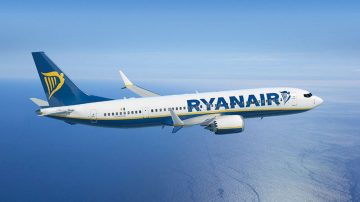
Cathay Pacific has committed to achieving net-zero carbon emissions by 2050. The Group, which includes Cathay Pacific, Cathay Dragon, Air Hong Kong and HK Express emitted 7.59 million tonnes of CO2 in 2020, a drop of 59 per cent from 2019 because of the Covid-19 pandemic.
The group is focusing on a number of different areas in an attempt to achieve its aim. To see all the details, you can download Cathay Pacific’s Sustainability Development Report.

Sustainable Aviation Fuel (SAF)
The Group is increasing its use of SAF, with the aim of making it “viable for mainstream adoption”.
In 2021, it became one of the first airlines in Asia to target 10 per cent SAF use for flights by 2030.
It has also committed to purchasing more than 350 million gallons of SAF beginning from 2024 alongside our oneworld Alliance peers.
It launched Asia’s first major corporate sustainable aviation fuel (SAF) programme
The airlines says that it is ”taking the lead in creating strong demand for and accelerating the deployment of SAF in the region”.
This focus on SAF is not new. In 2014, it became the first airline investor in Fulcrum BioEnergy, which converts household waste into SAF and has committed to purchasing 1.1 million tonnes of SAF over 10 years, making up around 2 per cent of its total fuel requirements from 2023 onwards.
The plant began operations this year (2022) and will be able to convert 175,000 tonnes of waste into more than 10 million gallons of fuel each year. Fulcrum is also planning a similar biorefinery at the Essar Oil (UK) Limited refinery at Stanlow, Ellesmere Port, in the North West of England.

Efficiency
The Group is constantly working to reduce aircraft emissions, such as by upgrading to a new fuel-efficient fleet and reducing engine use on the ground. The Group is also committed to cutting our ground emissions by 32 per cent from the 2018 baseline before the end of 2030.
As with all businesses, Cathay is aware of climate risks to its business, and the necessity of ensuring that it satisfies Environmental, Sustainability and Governance (ESG) requirements. It has “taken reference of the recommendations by the Task Force on Climate-related Financial Disclosures (TCFD)” and says its “approach is informed by our understanding of physical and transition risks relevant to [its] businesses.”
Physical risks would be extreme weather events, which the airline will mitigate against with responses such as “upgrading systems to more efficiently optimize new flight arrangements for customers affected by service disruptions.”
Transition risks and both regulation and financial. The “cost of offsetting emissions was estimated under different scenarios of China participating in the scheme from 2021 or 2027 onwards.”
There is also the risk to its reputation because of the changing preferences of stakeholders. The Group says that “We expect a growing demand for more actions to be taken by the Group in further mitigating its climate impact. This may impact consumers’ and corporates’ preference.”
Cathay Pacific Chief Executive Officer Augustus Tang said: “The unprecedented pandemic has shaken the world and showed us that ‘business as usual’ is not an option when dealing with an imminent global risk. Climate change, potentially a much more disruptive crisis, calls for ramped-up efforts.”
Tang said: “Our net-zero pledge aligns with the requirements laid out in the UN’s Intergovernmental Panel on Climate Change (IPCC) and the Paris Agreement, and provides the focus we need in aligning our strategy – from fleet planning and carbon offsetting to further investment in Sustainable Aviation Fuel and the development of new technologies.”

Carbon offsetting
Cathay Pacific’s carbon offset programme, Fly Greener, gives passengers the chance to purchase offsets based on the CO2 emissions generated from their flight. The contributions go towards Gold Standard-accredited third-party projects. In addition, the airline has also been offsetting all the emissions from its employees’ business travel since the launch of the programme in 2007. To date, the programme has offset over 300,000 tonnes of carbon emissions.
Cathay says,
“In 2020, a total of 41,134 tonnes of carbon emission produced by our operations were offset by the programme. This included 1,341 tonnes offsets for our employees duty travel, 34,080 tonnes contributed by our corporate clients, 3986 tonnes for a promotional campaign and 1,726 tonnes by individual customers.”
Cathay also supports the implementation of the Carbon Offsetting and Reduction Scheme for International Aviation (CORSIA) scheme under the International Civil Aviation Organization (ICAO). In 2020, we completed and verified our first Emissions Report which was submitted to Hong Kong Civil Aviation Department.












